Fun Facts
Top 7 Popular Mixed Dog Breeds For Families

Last Updated on July 23, 2022 by Dogs Vets
Top 7 Popular Mixed Dog Breeds For Families
Dogs can be a huge part of the family, and bring a great deal of affection into your life.
It’s important to find a breed that is right for you and all members of your home before deciding what type of dog you want to adopt.
Whether you need a dog that is hypoallergenic, comfortable around small children, or happy to go with the flow, a mixed breed could provide a range of positive characteristics that make them the perfect match for you.
The mixed breeds are more affordable than purebred puppies, and they are also very popular among people who are looking for an easy-going pet. Consider the following mixed dogs for you and your family.
#1. Pomsky Dog

Don’t let their adorable face trick you, pomskies are full of energy, which makes them very playful pups. They are mixed between a Siberian husky, and a Pomeranian.
These loyal creatures are great for single person households, or families with children who are physically active.
The main thing to be aware of when considering a pomsky is that they have incredibly thick coats. While this is an entirely normal part of their heritage, you will need to get a pomsky groomed regularly.
Because of this, we would not recommend a pomsky to someone who suffers from severe allergies, as their coat needs to be maintained in order to avoid excessive malting.
Check out Designer Dog World for more information about different types of mixed breeds and the kind of family that they would be the best fit for.
#2. Mastiff Mix

For those that want a dog that will also provide security, a mastiff mix could be for you. By nature, they are incredibly large dogs.
Their personalities can vary greatly, depending on the specific breed that the mastiff is mixed with.
Mastiff mixes can be incredibly affectionate and easy to train, too. Because of this, they are perfect for most households. Additionally, they are very easy to groom in comparison to the pomsky, for example. Mastiff mixes are kind, affectionate, and extremely huggable.
#3. Goldendoodle
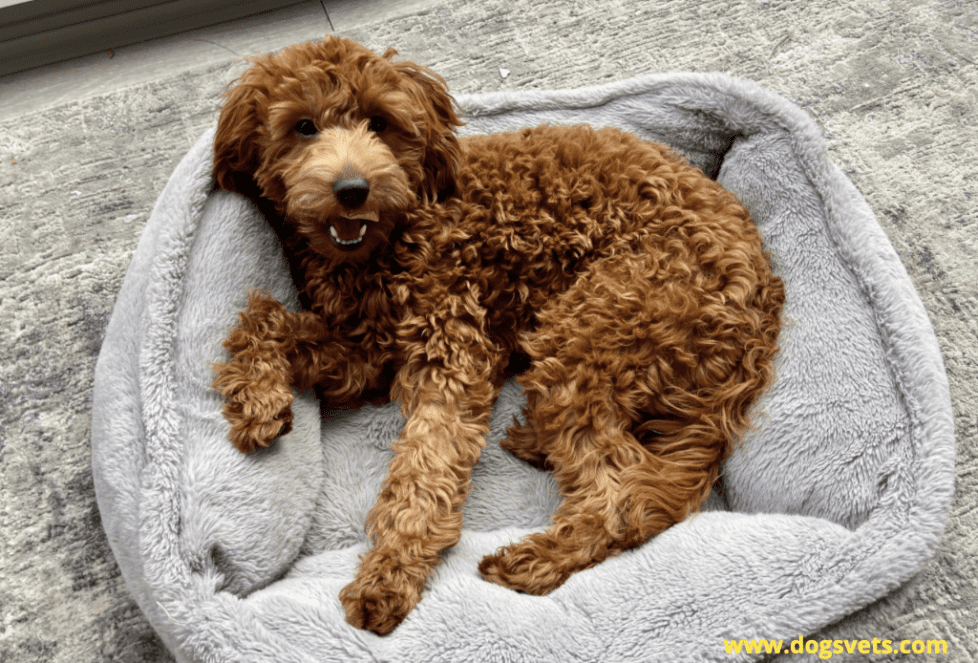
If you want a family pet to bring on long hikes and adventures, then a goldendoodle will happily oblige! They are excellent swimmers, and will not have any issue playing with children for hours.
Goldendoodles love affection and pets, and are adorable combinations of golden retrievers and poodles. This means that they don’t malt, most of the time, unless you are brushing them. They will therefore need regular grooming when their coat gets too long.
These gentle creatures are easy to train once they are settled within your home. They love being part of the family, and want to be involved when you have plans. Goldendoodles could be a perfect adventure buddy because of this.
#4. Chug Dog

For a smaller family dog that will love you as much as a larger dog, a chug is a mix between a chihuahua and a pug. Although they are considered to be too small and delicate for active families when they are puppies, chugs love to be near to their humans.
They have an interesting shaped face that will make them stand out when you are walking them.
A chug would be a great family pet if you work from home frequently, or if you have a job that you can bring your dog to.
#5. Schnoodle Dog
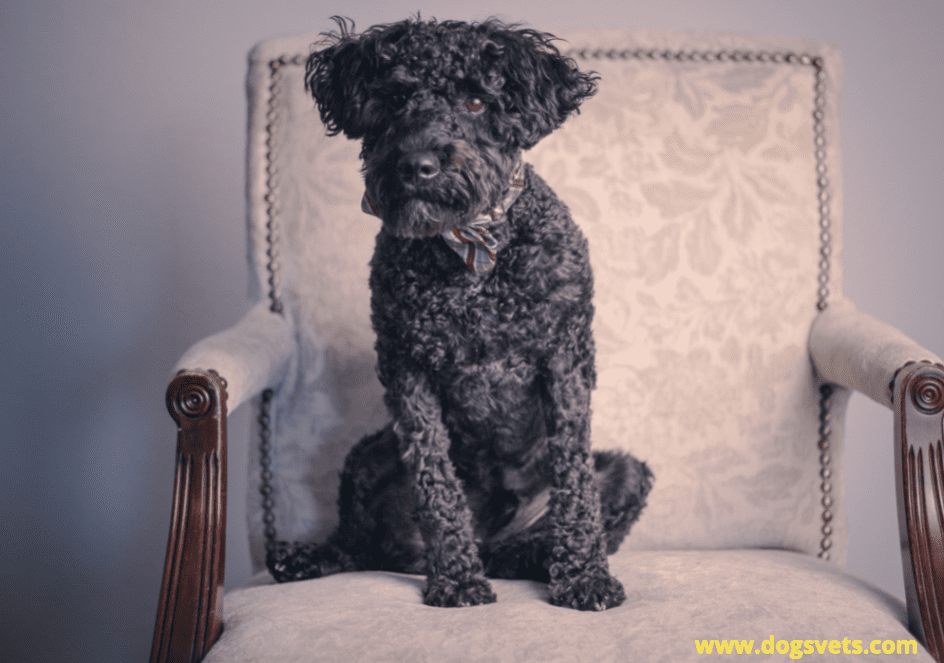
A schnoodle is a highly intelligent mix that loves to play, and are very easy to train. This is because the breeds that they come from are both incredibly intelligent; the poodle and schnauzer. Because of this, however, the schnoodle can easily develop bad habits.
Make sure that you are using positive reinforcement to encourage positive behavior as early as possible with a schnoodle.
They can also become bored over time, so this mix isn’t recommended for people who work long hours out of the house.
With that being said, schnoodles make great companions when they are introduced to the appropriate home. They are charming creatures that vary in size, depending on the type of poodle that they have been bred from.
#6. Shih-poo Dog
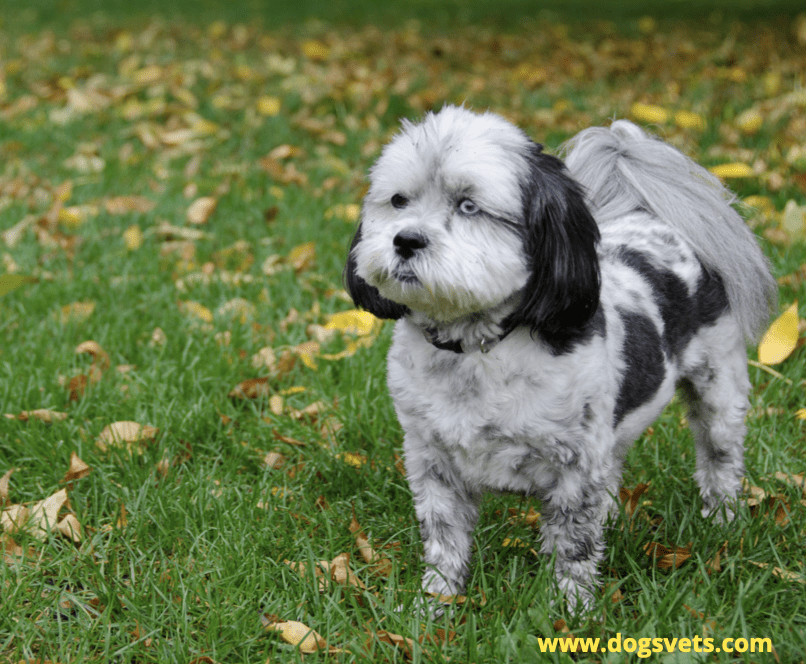
Shih-poo If you are prepared for anything, the Shih-Tzu may be the right puppy for you. Their Shih Tzu and Poodle offspring could have either long or curly fur, or a combination of the two! This hypoallergenic puppy can be stubborn when it comes to obeying commands, so training must be consistent.
Shih-Poos are wonderful companion animals for everyone, but a senior citizen is most likely the ideal match. They enjoy being treated, loved, and adored. They are quite adaptable and may survive in virtually any habitat, be it a family home, an apartment, or a shack in the middle of nowhere.
#7. Cockapoo Dog

Cockapoo A cute, small intelligent, and refined puppy may be in your future. The Cockapoo could be the breed you’re looking for. The combination of Cocker Spaniel and Poodle makes this dog playful, extremely intelligent, and largely hypoallergenic! Their final build will be small to medium!
Cockapoos are often sociable and considered to be good with children, making them an ideal family pet. They are known to thrive in a family home environment with lots of socialisation, training, and attention.
Summary
There are so many interesting combinations of dog breeds out there, that it can be challenging to figure out what mix would be the best fit for you and your family.
Remember to think about your needs and lifestyle before making this decision.
It’s important that you are finding the right dog for your household, so that they are getting the best start in life. Add a mixed dog breed to your life for an affectionate companion.
Facts Check
We hope you enjoyed this article… What are your thoughts ?
Рleаse feel free to share with us in the comments section below!
Fun Facts
Escape-Proofing Your Yard: DIY Tips for Identifying and Addressing Potential Escape Routes in Your Landscaping

Last Updated on June 12, 2024 by Dogs Vets
A secure yard is essential for keeping your beloved canine companion safe and preventing them from venturing into dangerous situations. However, even the most well-intentioned pet owners may overlook potential escape routes in their landscaping, leading to unexpected and stressful escape incidents.
In this article, we’ll explore practical DIY tips for identifying and addressing common escape routes, helping you create a more secure and escape-proof outdoor space for your furry friend.
Conduct a Thorough Yard Inspection
The first step in escape-proofing your yard is to conduct a thorough inspection of your property. This process involves carefully examining your landscaping and fencing from your dog’s perspective, looking for any potential weak spots or opportunities for escape.
When inspecting your yard, pay special attention to:
- Fence height: Ensure your fence is tall enough to prevent your dog from jumping over, taking into account their size and athletic ability.
- Gaps and holes: Look for any gaps beneath the fence, between fence panels, or around gates where your dog could squeeze through.
- Loose or damaged fencing: Check for any loose, rotting, or damaged fence boards that could be easily pushed aside or broken through.
- Climbable objects: Identify any objects near the fence that your dog could use as a stepping stone to jump over, such as wood piles, furniture, or large rocks.
By thoroughly assessing your yard and identifying potential escape routes, you can create a targeted plan for addressing these weaknesses and improving your property’s overall security.
Reinforce and Repair Fencing
Once you’ve identified any vulnerabilities in your fencing, it’s time to take action to reinforce and repair these areas. Depending on the specific issues you’ve discovered, there are several DIY solutions you can implement:
- Fill gaps and holes: Use sturdy materials like chicken wire, hardware cloth, or metal flashing to cover any gaps or holes beneath the fence or between panels. Securely attach these materials to the fence posts and ensure they extend several inches into the ground to prevent digging.
- Reinforce fence posts: If your fence posts are loose or wobbly, consider reinforcing them with concrete or additional support stakes. This will make it more difficult for your dog to push through or collapse the fence.
- Replace damaged boards: Promptly replace any rotting, cracked, or broken fence boards with new, sturdy materials. Regularly inspect and maintain your fence to catch any damage early on.
- Add a lean-in or coyote roller: For dogs that are prone to climbing or jumping, consider installing a lean-in at the top of the fence (angling the top portion inward) or a coyote roller (a rolling bar that makes it difficult for animals to gain a foothold).
By reinforcing and repairing your fencing, you can create a more secure barrier that will effectively contain your dog and prevent unwanted escapes.
Eliminate Climbable Objects and Landscaping Hazards
In addition to addressing fencing issues, it’s crucial to eliminate any climbable objects or landscaping hazards that could aid in your dog’s escape attempts. This process may involve some yard reorganization and creative problem-solving.
Some tips for eliminating climbable objects and landscaping hazards include:
- Keep the fence line clear: Remove any objects, furniture, or debris near the fence that your dog could use as a launching pad to jump over.
- Trim back vegetation: Cut back any trees, shrubs, or vines that grow close to the fence, as these can provide a natural ladder for your dog to climb.
- Secure outdoor structures: Ensure sheds, playhouses, or other outdoor structures are positioned away from the fence line and have secure doors or latches to prevent your dog from using them as an escape route.
- Address landscaping features: Pay attention to landscaping elements like raised beds, retaining walls, or boulders that could enable your dog to get a boost over the fence. Consider repositioning these features or adding barriers to prevent access.
By minimizing the presence of climbable objects and addressing potential landscaping hazards, you can greatly reduce the risk of your dog finding a creative way to escape the yard.
Consider High-Tech Solutions
In addition to traditional escape-proofing methods, there are also high-tech solutions available that can provide an extra layer of security for your yard. One such option is a GPS invisible dog fence, which uses satellite technology and a special collar to create a virtual boundary for your dog.
Here’s how it works:
- You define the boundary: Using a mobile app or web portal, you set the desired boundary for your dog, which can be customized to your property’s unique layout.
- Your dog wears a special collar: The collar communicates with the GPS satellites to determine your dog’s location relative to the boundary.
- Audible warnings and corrections: If your dog approaches the boundary, the collar will emit an audible warning. If they continue, a mild static correction will be delivered to deter them from crossing the line.
While a GPS invisible dog fence can be an effective tool for containing your dog, it’s essential to properly train your dog to understand and respect the boundary. This process involves a gradual introduction to the system, positive reinforcement, and close supervision to ensure your dog is comfortable and responding well to the training.
Maintenance and Monitoring
Escape-proofing your yard is an ongoing process that requires regular maintenance and monitoring. Over time, fences can deteriorate, landscaping can change, and your dog’s behavior or abilities may evolve, potentially creating new escape opportunities.
To keep your yard secure and escape-proof, make a habit of:
- Regularly inspecting your fence: Look for any signs of damage, wear, or weakening, and promptly address any issues you discover.
- Monitoring your dog’s behavior: Pay attention to any changes in your dog’s behavior or escape attempts, as this may indicate a new vulnerability in your yard’s security.
- Adapting to changes: As your landscaping or your dog’s needs change, be prepared to adjust your escape-proofing strategies accordingly.
By staying vigilant and proactive in maintaining and monitoring your yard’s security, you can provide a safe and contained environment for your furry friend to enjoy.
Conclusion
Escape-proofing your yard is a critical step in ensuring your beloved canine companion remains safe and secure while enjoying the great outdoors. By conducting a thorough inspection, reinforcing and repairing fencing, eliminating climbable objects and landscaping hazards.
Remember, escape-proofing is an ongoing process that requires regular maintenance, monitoring, and a willingness to adapt as your dog’s needs or your landscaping changes. Stay vigilant, be proactive, and always prioritize your dog’s safety and well-being.
In addition to implementing these escape-proofing strategies, it’s essential to provide your dog with plenty of mental and physical stimulation, as well as proper training and socialization. A happy, well-exercised, and mentally engaged dog is less likely to seek out escape opportunities or develop problematic behaviors.
By combining a secure yard with a loving, attentive approach to dog ownership, you can create a safe and fulfilling environment for your furry friend to thrive. So roll up your sleeves, grab your tools, and start escape-proofing your yard today – your dog will thank you for it!
Fact Check
We strive to provide the latest valuable information for pet lovers with accuracy and fairness. If you would like to add to this post or advertise with us, don’t hesitate to reach us. If you see something that doesn’t look right, contact us!
Fun Facts
20 Pets Fun Facts You Need to Know
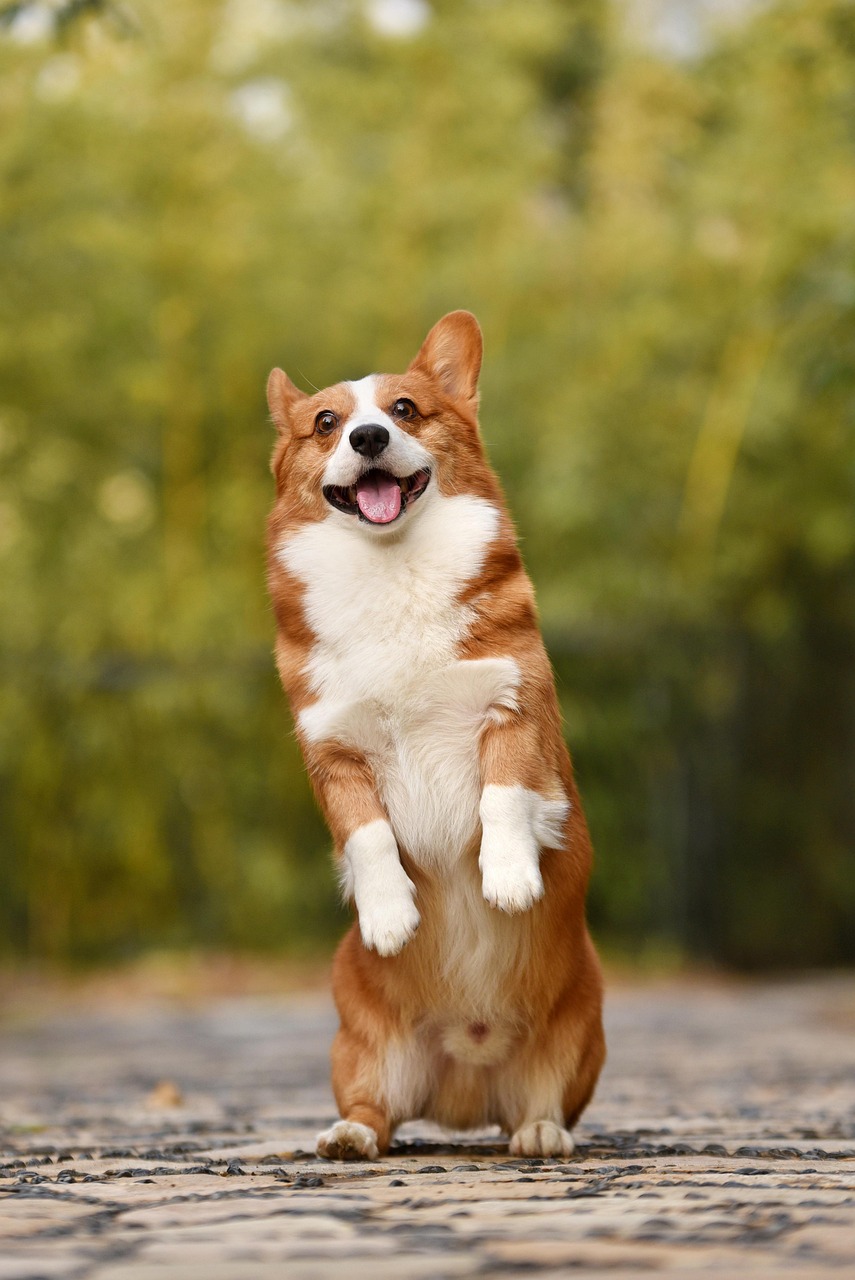
Last Updated on June 20, 2024 by Dogs Vets
20 Pets Fun Facts You Need to Know
As pet lovers, we often find ourselves fascinated by the quirks and characteristics of our furry friends. From their unique personalities to their remarkable abilities, there’s so much to learn and appreciate about the animals that bring joy to our lives.
In this article, we’ll delve into 20 fun facts about pets that you might not know, covering a range of topics from their behavior and physiology to their history and cultural significance.
1. Pets Have a Unique Sense of Smell
Did you know that pets have a more developed sense of smell than humans? This is because their noses contain millions of olfactory receptors, compared to only a few hundred in humans.
This heightened sense of smell allows pets to detect subtle changes in their environment and track down their favorite treats.
2. Cats Have Three Kinds of Hearing
Unlike humans, who have only two types of hearing, cats have three. They can detect sounds in the ultrasonic range, which is beyond human hearing, and can even hear sounds that are too faint for us to detect.
This is why cats often seem to be listening in on conversations that are too quiet for us to hear.
3. Dogs Can Smell Cancer
Research has shown that dogs can detect certain types of cancer, such as lung, breast, and colon cancer, by smelling changes in the body’s chemistry.
This ability is thought to be linked to the dog’s keen sense of smell and their ability to detect subtle changes in their environment.
4. The First Pet Was a Wolf
The domestication of wolves is believed to have occurred around 15,000 years ago. Over time, these early dogs evolved into the diverse range of breeds we see today, each with their unique characteristics and abilities.
5. Cats Have Barbs on Their Tongues
Cats have tiny barbs on their tongues called papillae, which help them groom their coats and remove loose hair. These barbs also aid in the digestion of their food, allowing them to extract more nutrients from their meals.
6. Dogs Can See in Color
Contrary to popular belief, dogs are not colorblind. While they do not see colors as vividly as humans, they can distinguish between different colors and even see in shades of yellow and blue.
7. The World’s Largest Pet is a Blue Whale
The blue whale is the largest known animal to have ever lived, reaching lengths of up to 100 feet (30 meters). While it’s not typically considered a pet, it’s an impressive example of the diversity of life on our planet.
8. Cats Can Sleep for 16 Hours a Day
Cats are notorious for their love of sleep, and it’s not uncommon for them to spend up to 16 hours a day snoozing. This is because they are natural predators and need to conserve their energy for hunting and other activities.
9. Dogs Can Learn Over 1,000 Commands
Dogs are highly intelligent animals that can learn a wide range of commands and tasks. With proper training, they can learn over 1,000 different commands and even perform complex tasks like search and rescue operations.
10. The First Cat Show Was Held in 1871
The first cat show was held in London in 1871, and it marked the beginning of a long tradition of cat shows and competitions. Today, cat shows are held all over the world, showcasing the unique characteristics and breeds of domestic cats.
11. Pets Can Help Reduce Stress
Studies have shown that simply petting a cat or dog can reduce stress levels and improve overall well-being. This is thought to be due to the release of oxytocin, a hormone that promotes feelings of relaxation and bonding.
12. The World’s Oldest Known Pet is a Dog
The world’s oldest known pet is a dog named Bluey, who lived to the age of 29 years and 5 months. Bluey was a cattle dog from Australia who was celebrated for his remarkable longevity.
13. Cats Have a Unique Gait
Cats have a unique gait that allows them to move silently and efficiently. This is due to their flexible spines and specialized muscles that enable them to bend and twist in ways that humans cannot.
14. Dogs Can Detect Seizures
Some dogs are trained to detect seizures in people, often by recognizing changes in their behavior or body language. This can be a lifesaving ability, as it allows the dog to alert others to the impending seizure and provide support during the episode.
15. The First Dog Breed Was the Saluki
The Saluki is believed to be the oldest known dog breed, with a history dating back over 4,000 years. This ancient breed was prized for its speed and agility, and was often used for hunting and other tasks.
16. Cats Can See in the Dark
Cats have a reflective layer in the back of their eyes called the tapetum lucidum, which helps them see in low light conditions. This is why their eyes often glow in the dark, giving them an otherworldly appearance.
17. Dogs Can Learn to Detect Allergies
Some dogs are trained to detect allergies in people, often by recognizing changes in their behavior or body language. This can be a valuable ability, as it allows the dog to alert others to potential allergens and provide support during allergic reactions.
18. The World’s Largest Cat Breed is the Maine Coon
The Maine Coon is one of the largest domesticated breeds of cat, with males weighing up to 25 pounds (11.3 kilograms). Despite their size, Maine Coons are known for their gentle and affectionate nature.
19. Pets Can Help Improve Mental Health
Pets have been shown to have a positive impact on mental health, reducing symptoms of depression and anxiety and improving overall well-being.
This is thought to be due to the bond that forms between pets and their owners, which provides a sense of comfort and companionship.
20. The First Pet Insurance Policy Was Sold in 1890
The first pet insurance policy was sold in 1890, and it marked the beginning of a growing industry that now provides coverage for millions of pets around the world.
Today, pet insurance is an essential part of responsible pet ownership, providing financial protection for pets and their owners.
Conclusion
In conclusion, pets are fascinating creatures that continue to captivate and inspire us. From their unique senses and abilities to their remarkable histories and cultural significance, there’s so much to learn and appreciate about the animals that bring joy to our lives.
Whether you’re a seasoned pet owner or just a pet lover, we hope you’ve enjoyed these 20 fun facts about pets and will continue to explore the wonders of the animal kingdom.
FAQs
What is the most common pet in the world?
The most common pet in the world is the dog, with over 1 billion dogs kept as pets globally.
What is the most popular cat breed?
The most popular cat breed is the domestic shorthair, which is a generic term for cats that do not have a specific breed name.
Can pets be trained to detect diseases?
Yes, pets can be trained to detect diseases such as diabetes, epilepsy, and cancer. This is often done through specialized training programs that teach the pet to recognize changes in their owner’s behavior or body language.
How many hours a day do dogs sleep?
Dogs typically sleep for around 12-14 hours a day, although this can vary depending on factors such as age, breed, and lifestyle.
Can pets help with anxiety?
Yes, pets can help with anxiety by providing a sense of comfort and companionship. Studies have shown that simply petting a cat or dog can reduce stress levels and improve overall well-being.
What is the most expensive pet to own?
The most expensive pet to own is often considered to be the African grey parrot, which can cost up to $20,000 per year to care for.
Can pets be trained to perform tricks?
Yes, pets can be trained to perform tricks and tasks through positive reinforcement techniques such as clicker training and reward-based training.
References
“The Sense of Smell in Pets.” PetMD, 2022, https://www.petmd.com/pet-care/the-sense-of-smell-in-pets.
“How Cats Hear.” The Spruce Pets, 2022, https://www.thesprucepets.com/how-cats-hear-1118135.
“Dogs Can Detect Cancer.” Science Daily, 2022, https://www.sciencedaily.com/releases/2022/02/220204141155.htm.
“The Domestication of Wolves.” National Geographic, 2022, https://www.nationalgeographic.org/encyclopedia/domestication-of-wolves/.
Fun Facts
5 Ways Men Can Rock a Blue Diamond Ring
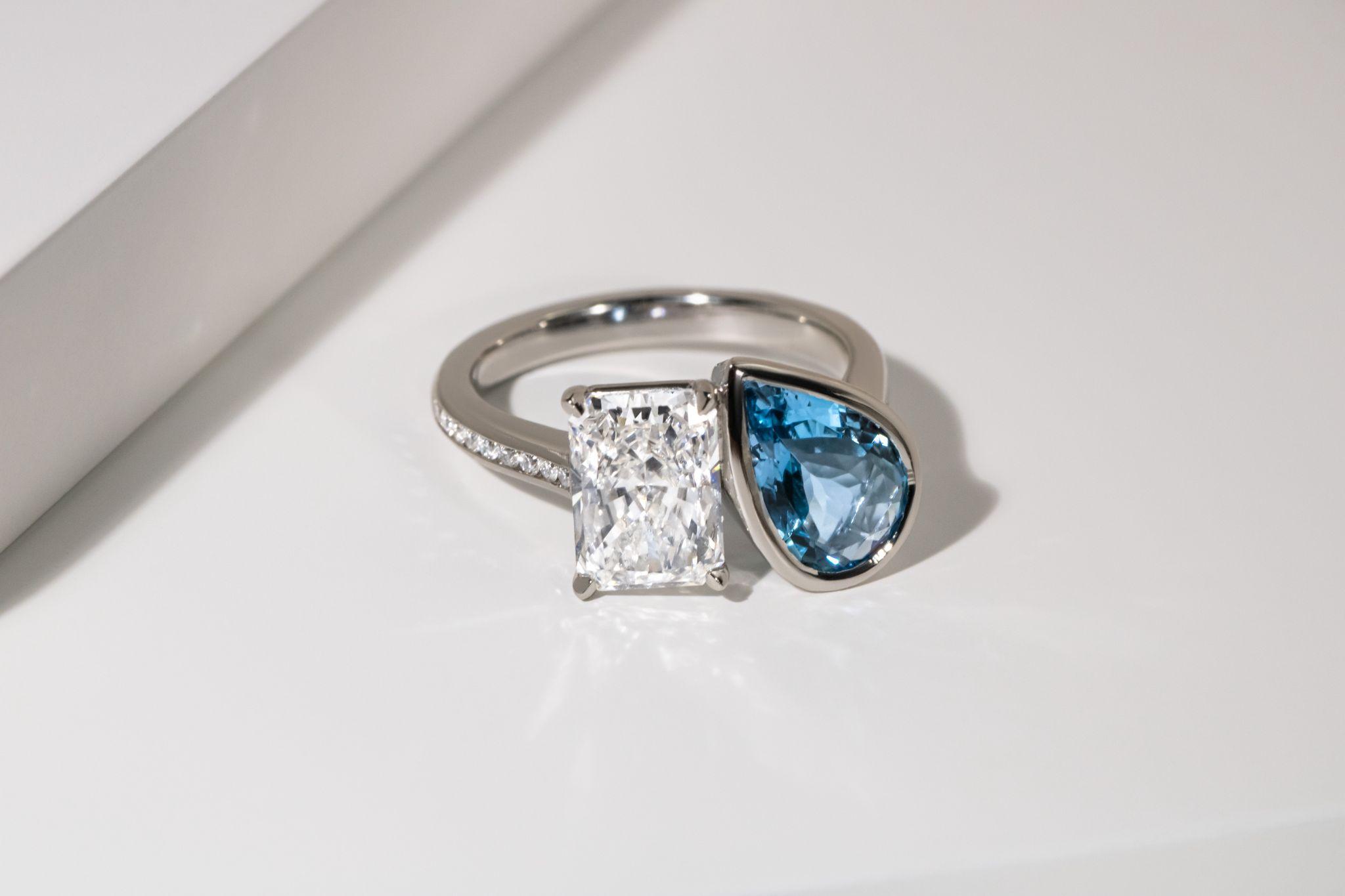
Last Updated on June 10, 2024 by Dogs Vets
In the world of men’s fashion, accessories play a critical role in raising one’s style profile. While watches, cufflinks, and belts have long been traditional, one accessory is gaining appeal among modern gentlemen: the blue diamond ring.
A blue and diamond ring, which is frequently associated with elegance, refinement, and a hint of mystique, may lend a touch of flair to any outfit. Here are five ways men can wear a blue diamond ring and elevate their look.
Make a Statement Piece
A blue diamond ring is more than just an accessory; it is a statement piece. Whether it’s a sleek band or a more elaborate design, choose a ring that reflects your personality and taste. For a stunning contrast, pair a big solitaire blue diamond with white gold or platinum. Let your ring speak for itself by keeping the rest of your clothing simple, enabling it to stand out as the focal point of the whole look.
Pair it with Classic Attire
Pair your blue and blue diamond ring with classic clothing to achieve a timeless yet contemporary style. Consider tailored suits in navy or charcoal gray, clean white dress shirts, and polished leather shoes. The combination of traditional menswear with modern accessory results in a stylish look that emanates confidence and refinement. Whether you’re attending a formal event or a business meeting, this combo is sure to make an impression.
Experiment with Casual Wear
Who says blue diamond rings are only for formal occasions? Incorporate this elegant accessory into your daily style to freshen up your casual clothing. Layer it with a leather bracelet or combine it with other rings for a casual yet sophisticated look. Combine it with a denim jacket, a fitting T-shirt, and chinos to create a cool and effortlessly sophisticated look. The aim is to create the ideal mix between casual and elegant, resulting in a polished yet relaxed appearance.
Play with Color
Blue diamonds occur in a variety of colors, ranging from light sky blue to deep marine hues. Experiment with different blue tints to suit your skin tone and personal style. Choose a bright blue diamond ring for a strong and eye-catching style or a more delicate color for a hint of understated elegance. Consider mixing and matching metals to enhance the diamond’s color—yellow gold can highlight warmer tones, while white gold or platinum can compliment colder tones.
Personalize Your Look
One of the most appealing aspects of wearing a blue diamond ring is its capacity to express your unique personality. Personalize your ring by changing the design, engraving it, or selecting a unique setting that reflects your likes and preferences. Infuse your personality into your ring, whether it’s a family treasure passed down through generations or a one-of-a-kind design made just for you. After all, style is a kind of self-expression, and the accessories you wear should represent your personality.
Finally
A blue diamond ring is a flexible and timeless item that may complement any man’s look. Whether you favor classic elegance or modern flair, there are numerous ways to incorporate this magnificent diamond into your outfit. A blue and blue diamond ring is the ideal finishing touch for the modern guy, whether you want to make a dramatic statement or add refinement to your everyday appearance. So go ahead and show off your unique flair with a gorgeous blue diamond ring.
-

 Dog Care Advice3 years ago
Dog Care Advice3 years agoThe Top 9 Best Dog Collars In The Market In 2022 ( Shocking Revelation )
-

 Dog behavior4 years ago
Dog behavior4 years agoTop 25 Most Dangerous Dogs in the World with Photos
-
![Top 100 Best tough names for dogs [Male and Female]](https://dogsvets.com/wp-content/uploads/2021/02/Screen-Shot-2021-02-14-at-8.09.27-AM.png)
![Top 100 Best tough names for dogs [Male and Female]](https://dogsvets.com/wp-content/uploads/2021/02/Screen-Shot-2021-02-14-at-8.09.27-AM.png) Dog Names3 years ago
Dog Names3 years agoTop 100 Best tough names for dogs [Male and Female]
-

 Dog Names4 years ago
Dog Names4 years ago500 Top dog names female – Names that are cute as your dog
-

 Dog behavior4 years ago
Dog behavior4 years agoUnderstanding End-of-Life Signs in Dogs – What dogs do before death?
-

 Dog Names3 years ago
Dog Names3 years agoTop 1000 plus cute names for pets – dogs, cats, male, female and more
-

 Pet Accessories8 months ago
Pet Accessories8 months agoSleepets Dog Tag Tracker Review: Like an Apple AirTag (no subscription)
-

 Trending Dog Stories1 year ago
Trending Dog Stories1 year agoMan Builds a Custom Kayak to Share Aquatic Adventures with His Two Dogs”







